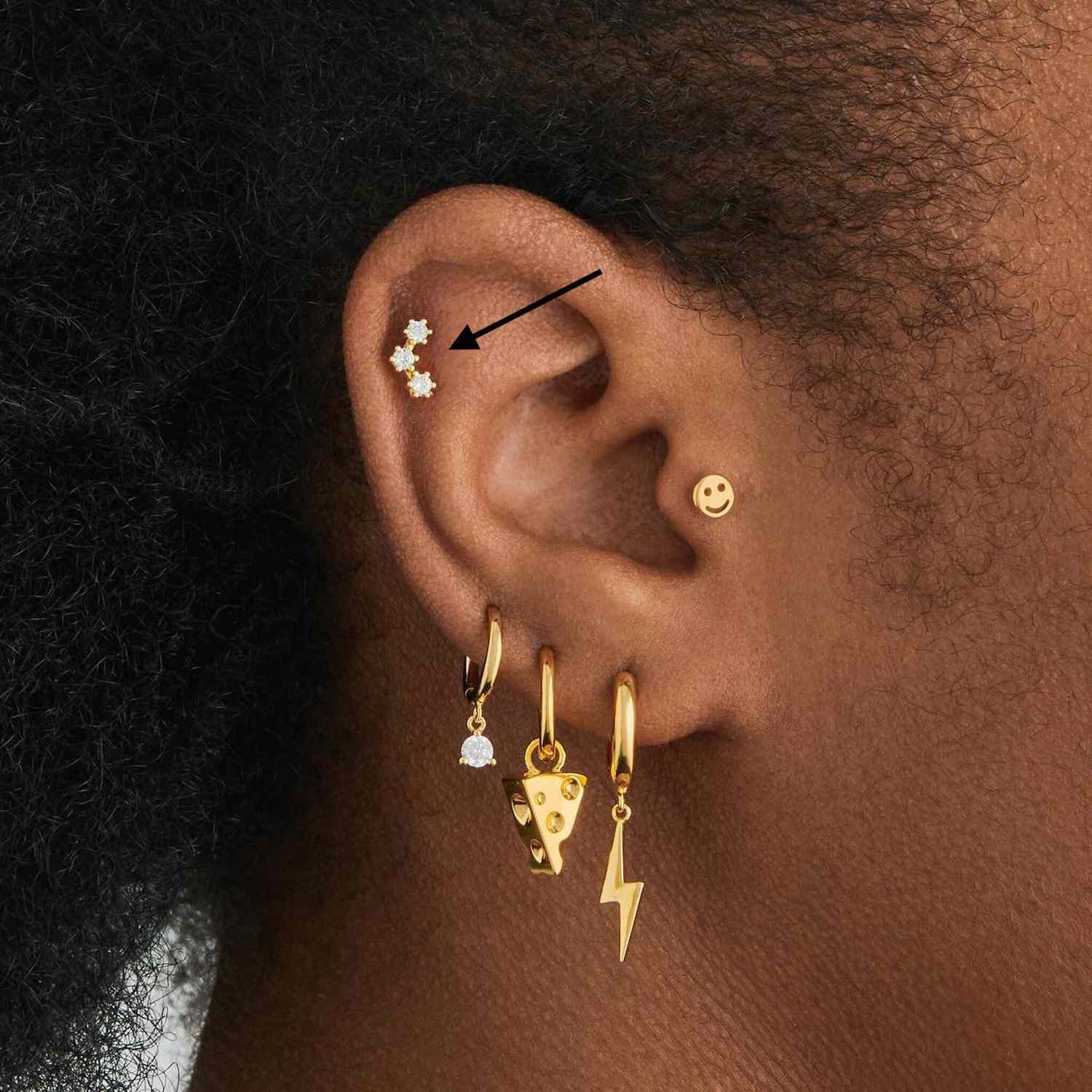
Ear Piercing
Types of Ear Piercings: There are various types of ear piercings you can consider, such as:
Earlobe Piercing: This is the most common and basic type of ear piercing, done on the fleshy part of the earlobe.
Cartilage Piercing: This includes piercings on the upper ear cartilage, such as helix, tragus, and daith piercings.
Industrial Piercing: This involves connecting two separate piercings on the upper ear with a long straight barbell.
Rook, Conch, and Snug Piercings: These are other types of cartilage piercings, each with its specific location on the ear.
Choosing a Piercing Studio: It's crucial to select a reputable and professional piercing studio to ensure a safe and hygienic experience. Consider factors such as their sterilization practices, trained piercers, and customer reviews.
Safety and Hygiene: Proper safety and hygiene are paramount during ear piercing. Make sure the piercer uses sterile needles, fresh gloves, and sanitizes the area before the procedure. They should also provide aftercare instructions to prevent infections.
Pain and Healing: Ear piercing can cause some discomfort, but the level of pain varies among individuals. After the procedure, the earlobes generally take 4-6 weeks to heal, while cartilage piercings may take longer, ranging from 2-12 months. During the healing process, it's essential to avoid touching the piercing excessively and to clean it regularly.
Jewelry Options: There are numerous earring options available for different piercings. Initially, it's recommended to use hypoallergenic studs or hoops made from materials like surgical steel or titanium. Once the piercing has healed, you can explore a wide range of earring styles and materials.
Aftercare: Proper aftercare is crucial to prevent infections and promote healing. Clean the pierced area regularly with a saline solution or a mild saline solution. Avoid swimming in pools or bodies of water during the healing period, as they can harbor bacteria. It's important to follow the aftercare instructions provided by the piercer.
Remember, the information provided here is general, and it's always best to consult with a professional piercer for personalized advice and guidance tailored to your specific situation.
Types of Ear Piercings: There are various types of ear piercings you can consider, such as: Earlobe Piercing: This is the most common and basic type of ear piercing, done on the fleshy part of the earlobe. Cartilage Piercing: This includes piercings on the upper ear cartilage, such as helix, tragus, and daith piercings. Industrial Piercing: This involves connecting two separate piercings on the upper ear with a long straight barbell.